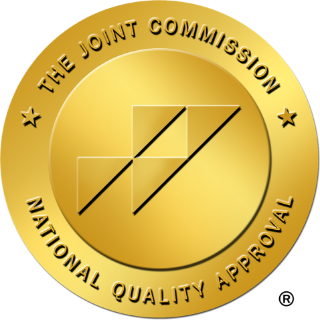Depression reaches far beyond emotional pain – it’s a complex condition that affects both mind and body. While many recognize the mental health aspects of depression, such as persistent sadness and loss of interest in activities, its physical impact often goes unnoticed or misunderstood.
Think of depression as a full-body experience. It’s not just about feeling down – it’s about how your entire system responds to these psychological changes. Your body and mind are interconnected through intricate networks of hormones, neurotransmitters, and neural pathways. When depression strikes, it disrupts these delicate systems, leading to real, measurable physical symptoms.
The Physical Symptoms of Depression
The physical manifestations of depression can include:
- Unexplained aches and pains
- Changes in appetite and weight
- Disrupted sleep patterns
- Persistent fatigue
- Digestive issues
Why Understanding Physical Symptoms Matters
Understanding these physical symptoms is crucial for several reasons:
- Early Detection: Physical symptoms often appear before emotional ones
- Better Treatment: Addressing both physical and mental symptoms leads to more effective recovery
- Breaking the Cycle: Physical symptoms can worsen depression, creating a feedback loop
Recognizing depression’s dual nature – both psychological and physical – helps create a more complete picture of this condition and opens the door to more effective, comprehensive treatment approaches.
In some cases, depression may co-occur with other mental health disorders such as Bipolar Disorder, complicating the overall treatment process. Additionally, specific therapeutic approaches like Dialectical Behavior Therapy (DBT) have shown significant benefits in managing mental health conditions including depression and substance abuse.
Related: 10 Benefits of Group Therapy for Mental Health
Understanding the Biological Mechanisms Behind Depression’s Physical Impact
Depression creates profound changes in brain chemistry that trigger physical symptoms throughout the body. These biological mechanisms help explain why people with depression experience real, measurable physical effects.
1. Brain Chemistry Alterations
The brain’s chemical messaging system becomes disrupted during depression. Key neurotransmitters affected include:
- Serotonin – Regulates mood, sleep, appetite, and pain sensitivity
- Norepinephrine – Controls energy, attention, and stress response
- Dopamine – Influences motivation, pleasure, and movement
When these chemical levels become imbalanced, it creates a cascade of physical effects throughout the body’s systems.
2. Changes in Movement and Physical Activity
Depression alters psychomotor function – how the brain controls physical movement. This can manifest as:
- Slowed physical movements
- Reduced facial expressions
- Flattened speech patterns
- Decreased energy for basic tasks
- Muscle tension and stiffness
3. The Pain-Depression Connection
The brain processes emotional and physical pain through shared neural pathways. Depression can:
- Lower pain tolerance thresholds
- Amplify existing pain signals
- Create new pain sensations
- Trigger inflammation responses
Research shows that brain regions involved in both pain and mood regulation – like the anterior cingulate cortex – become overactive during depressive episodes. This helps explain why physical pain is a common symptom of depression.
The body’s stress response system also becomes dysregulated, leading to increased production of stress hormones. This creates a physiological state of heightened sensitivity where both emotional and physical sensations become intensified.
Common Physical Symptoms Associated with Depression

Depression can show itself in various physical ways that can greatly affect daily life. Knowing these physical signs can help us understand and tackle depression better.
1. Pain and Physical Discomfort
- Ongoing joint pain, especially in the knees and shoulders
- Long-lasting muscle aches, particularly in the neck and back
- Unexplained pain in limbs that doesn’t get better with regular treatments
- Increased sensitivity to physical discomfort
2. Digestive System Changes
- Regular stomach issues and cramps
- Unpredictable bowel movements, going from constipation to diarrhea
- Continuous nausea without a clear medical reason
- Shifts in digestive habits affecting how one eats
3. Energy Levels and Physical Performance
- Overwhelming tiredness, even after enough rest
- Trouble doing basic daily activities like showering or cooking
- Decreased physical coordination and slower movement
- Less desire for physical exercise
4. Sleep Pattern Disruptions
- Difficulty falling asleep despite feeling physically tired
- Waking up often during the night
- Sleeping too much yet still feeling tired
- Changes in natural sleep-wake patterns
5. Appetite and Weight Changes
- Major decrease or increase in appetite
- Unexplained changes in weight
- Loss of interest in foods once loved
- Cravings for certain types of food, especially carbohydrates
These physical symptoms can create a challenging cycle – physical discomfort intensifies depressive feelings, while depression amplifies the perception of physical symptoms. Recognizing these physical signs as part of depression helps in developing effective treatment strategies that address both mental and physical aspects of the condition.
Other Ways Depression Can Affect Your Body Physically
Depression’s impact on the brain extends beyond emotional changes. Research shows that depression can physically alter specific brain regions, leading to measurable changes in brain structure and function.
Effects on the Hippocampus
The hippocampus, a brain region crucial for memory and emotion processing, often shrinks in people with depression. This reduction in size can affect:
- Memory formation and recall
- Emotional regulation
- Physical pain perception
- Stress response mechanisms
Impact on the Stress Response System
Depression triggers the release of stress hormones throughout the body. The stress response system becomes hyperactive, causing:
- Elevated cortisol levels
- Increased adrenaline production
- Disrupted inflammatory responses
- Compromised immune function
These hormonal changes can manifest as:
- Muscle tension and stiffness
- Heightened sensitivity to physical discomfort
- Reduced healing capacity
- Increased vulnerability to infections
Changes in the Amygdala
The amygdala, responsible for processing emotions and stress responses, often becomes enlarged during depression. This enlargement can intensify:
- Physical reactions to stress
- Autonomic nervous system responses
- Heart rate variations
- Blood pressure fluctuations
Effects on the Prefrontal Cortex
Brain imaging studies reveal reduced activity in the prefrontal cortex during depression, affecting:
- Physical coordination
- Motor control
- Body movement regulation
- Energy distribution
Exploring the Connection Between Depression and Chronic Pain Conditions
Depression and chronic pain share a complex relationship that creates a challenging cycle for many individuals. When pain persists, it can trigger depressive symptoms, while depression can amplify pain sensations – creating a self-perpetuating loop that impacts daily life.
The Chronic Pain-Depression Cycle:
- Physical pain leads to reduced activity
- Decreased activity results in social isolation
- Isolation intensifies depressive symptoms
- Depression lowers pain tolerance
- Lower pain tolerance increases pain sensitivity
Research shows that people with chronic pain conditions are 3 times more likely to develop depression. Common overlapping conditions include:
- Fibromyalgia
- Arthritis
- Lower back pain
- Migraines
- Neuropathic pain
The brain processes both pain and emotional signals through similar neural pathways. When depression sets in, the brain becomes more sensitive to pain signals, making physical discomfort feel more intense. This heightened sensitivity can lead to:
- Muscle tension and stiffness
- Increased inflammation
- Disrupted sleep patterns
- Reduced physical activity
- Weakened immune response
Understanding this connection helps healthcare providers develop treatment plans that address both conditions simultaneously. Effective management typically requires a combination of pain management strategies and depression treatment to break the cycle and improve quality of life.
Assessing Physical Symptoms in Depression: The Role of Clinical Scales
Healthcare providers use specific clinical assessment tools to measure both mental and physical symptoms of depression. These standardized scales help track symptom severity and treatment progress.
Common Clinical Assessment Tools:
- Hamilton Depression Rating Scale (HAM-D): Evaluates physical symptoms like sleep disturbances, measures changes in appetite and weight, and assesses energy levels and fatigue.
- Beck Depression Inventory (BDI): Tracks physical manifestations including exhaustion, monitors changes in sleep patterns, and records shifts in eating habits.
- Patient Health Questionnaire-9 (PHQ-9): Screens for physical symptoms like trouble sleeping, documents energy levels, and notes appetite changes.
These assessment tools assign numerical scores to symptoms, creating measurable data points. Regular monitoring through these scales helps healthcare providers:
- Identify patterns in physical symptoms
- Adjust treatment plans based on symptom changes
- Track improvement or deterioration
- Determine treatment effectiveness
Physical symptom assessment through clinical scales plays a vital role in developing personalized treatment strategies. The data gathered helps create targeted interventions addressing both mental and physical aspects of depression.
Related: 5 Signs of High Functioning Depression and What They Mean
Treatment Approaches Targeting Both Mental Health Symptoms and Physical Effects of Depression
Effective depression treatment requires addressing both psychological and physical symptoms simultaneously. Modern treatment approaches recognize this interconnected relationship and employ targeted strategies to provide comprehensive relief.
Medication Options
SSRIs (Selective Serotonin Reuptake Inhibitors)
- Regulate serotonin levels to improve mood
- Help reduce physical pain sensations
- Common options include Prozac, Zoloft, and Lexapro
SNRIs (Serotonin-Norepinephrine Reuptake Inhibitors)
- Target both serotonin and norepinephrine
- Particularly effective for physical symptoms
- Help with chronic pain and fatigue
- Examples include Cymbalta and Effexor
Integrated Treatment Approaches
- Physical therapy for muscle tension and pain
- Sleep hygiene programs to regulate sleep patterns
- Nutritional counseling to address appetite changes
- Exercise programs to boost energy levels
- Stress-reduction techniques for physical tension
The combination of these treatments creates a synergistic effect, where improvements in physical symptoms often lead to better mental health outcomes. Medical professionals can adjust treatment plans based on individual responses and specific symptom patterns, ensuring the most effective approach for each person’s unique situation.
Managing Relapse Risk by Taking a Holistic Approach to Treating Both Mental and Physical Aspects of Depression

Physical symptoms of depression can act as hidden triggers for relapse when left unaddressed. A holistic treatment approach recognizes the intricate connection between mind and body, targeting both psychological and physical manifestations of depression.
Key Physical Symptoms to Monitor:
- Persistent body aches and pains
- Changes in sleep patterns
- Digestive issues
- Energy levels
- Weight fluctuations
These physical symptoms serve as early warning signs of potential relapse. When patients learn to identify and address these symptoms alongside their mental health concerns, they build stronger defenses against depression’s return.
A holistic treatment plan might include:
- Regular physical activity to regulate mood and energy
- Mindfulness practices for body awareness
- Nutritional counseling for optimal brain function
- Sleep hygiene improvements
- Stress-reduction techniques like yoga or tai chi
- Body-focused therapies such as massage or acupuncture
Research shows patients who maintain awareness of their physical well-being alongside mental health treatment experience fewer relapses. This integrated approach helps create sustainable recovery by addressing depression’s full spectrum of symptoms.
Tracking both physical and emotional symptoms through wellness journals or mobile apps can help identify patterns and potential triggers before they escalate into a full relapse.
Taking the First Step with Pacific Breeze Recovery
Living with depression’s physical and mental symptoms can feel overwhelming – but you don’t have to face this journey alone. At Pacific Breeze Recovery, our specialized team understands the complex interplay between depression’s mental and physical manifestations.
We create personalized treatment plans that address:
- Both psychological and physical symptoms of depression
- Individual needs and circumstances
- Evidence-based therapeutic approaches
- Holistic healing methods
Our integrated mental health care approach combines medical expertise, clinical support, and holistic treatments to help you achieve lasting recovery. Located in Southern California, our serene environment provides the perfect setting for healing and growth.
Ready to start your recovery journey? Our compassionate team is here to guide you through each step. We offer effective treatment programs such as Cognitive Behavioral Therapy (CBT) which can be instrumental in your recovery process. Additionally, we provide group therapy options that foster a supportive community dedicated to your recovery.
Contact Pacific Breeze Recovery today to learn how we can help you overcome depression’s physical and emotional challenges through our comprehensive treatment programs.





